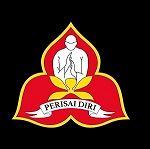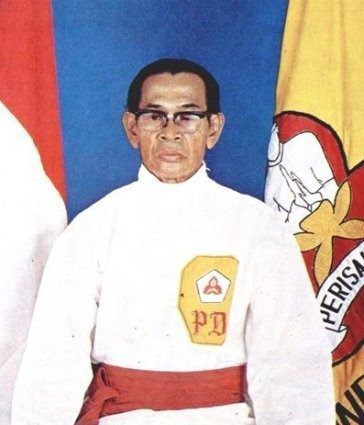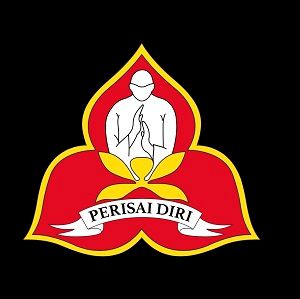Ka Dadan's students, Stephen Colledge Wesley Clark and Russell Dennis played significant roles in promoting PD in Australia. On 7 February 1984, The Don Muharam Academy of Silat Perisai-Diri was officially registered in Australia.
History
Periodically, a Pencak Silat expert was brought from Solo to teach the young men of the palace. However, because he was still only nine years old, Soebandiman was not permitted to participate in the lessons. Despite his age, Soebandiman’s desire to learn Pencak Silat compelled him to spy on each lesson. He would later sneak out of the palace, collect the village children of his age and then mimic the lessons he had just seen. Thus, at the age of nine years, Soebandiman had already become a ‘little teacher’. These ‘lessons’ continued, but resulted in his growing sense of frustration at the restrictions imposed by his family until he decided, while still quite young, to go out into the world.
His steps led him to the region of Jombang, East Java. When he was satisfied with his studies at Jombang, he left there and headed to Solo. Following his studies in Solo he moved to the city of Semarang in an effort to satisfy his desire for knowledge of Pencak Silat.
After he felt that he had gained as much as he could in Semarang his urge to improve his understanding and abilities led him to Pondok Randu Guntung, near Semarang. On exhausting the avenues of study there he moved onto Kuningan in Cirebon to seek another teacher. A steel will, a spirit like a ‘banteng’ bull, and a huge curiosity in the world around him combined with a feeling of being chosen to devote his life to studying the art of Pencak Silat motivated Soebandiman to continue his journey into remote regions of West Java, seeking teachers to satisfy his thirst for knowledge.
At this stage Soebandiman had studied the martial arts of twelve Silat experts or Pendekar, but even so he felt that the qualifications he had acquired were still lacking. It was during this time of despair that the young Soebandiman travelled to the region of Banyumas. Here Soebandiman worked to consolidate the various streams of Pencak Silat he had studied into a unified form.
From the various streams of Pencak Silat, Soebandiman sought to identify the essence of effective martial art techniques, and to combine them into a more practical form. Even though he still felt that were deficiencies in the capacity of the traditional martial arts, notably, the speed, efficiency and simplicity of the movements.
It was in Banyumas that R.M.S. Dirdjoatmodjo opened his first Silat school, named EKO KALBU (EKO). Shortly after opening his school, Soebandiman realised that there was yet another teacher he could learn from, a teacher that would ultimately influence him greatly in his quest for knowledge of the martial arts. R.M.S. Dirdjoatmodjo was introduced to a Master from China who lived in the Parakan region, named Yap Kie San. Shortly after meeting, Soebandiman was determined to have Master Yap Kie San as his teacher.Soebandiman stayed in Master Yap Kie San’s house and helped with the household chores. Whilst working there for three months, Soebandiman was totally ignored, not even addressed. Each day on waking, Master Yap Kie San would step over Soebandiman as he slept in front of Master Yap Kie San’s door.
Every time Soebandiman bolstered his courage to ask about studying under Master Yap Kie San, the answer was always, “Don’t worry about studying Silat, you’ll hurt yourself!” However, reminding himself that this might be a test given to determine his resolve, this answer made Soebandiman even more adamant to gain Master Yap Kie San’s favour.
After a further month had passed, whilst accompanying the Master fishing, Soebandiman once again asked Master Yap Kie San to teach him. Finally Soebandiman was accepted as a pupil. Soebandiman was invited home and given his first lesson. Soebandiman’s first lesson entailed entering a chicken-coop and assuming a horse stance. Soebandiman was told to hold the position until his Master returned, which was not until the end of the day.
At other times Soebandiman was told to practice movements in the chicken-coop, every time he felt tired and decided to stop for a rest, Master Yap Kie San would suddenly appear and scold his student, forcing him to repeat his exercises again.
Master Yap Kie San noticed a capacity in Soebandiman not common in most, and agreed to pass on all his knowledge to his dedicated student. As a consequence, Soebandiman’s commitment to training was all consuming as his lessons became increasingly difficult and demanding. Soebandiman’s training regime under Master Yap Kie San lasted 14 years. It was as a student of Master Yap Kie San that R.M.S. Dirdjoatmodjo was longest under instruction. On completion of his studies under Master Yap Kie San, Soebandiman’s wanderings continued to add maturity to his understanding of the world, especially to that of the martial arts.
Once again Soebandiman sought to consolidate his knowledge of the various streams of Pencak Silat under a common banner, this time basing his efforts on how to learn Silat without injury. The result of R.M.S. Dirdjoatmodjo’s efforts was the birth of the technique and training system of Silat Perisai-Diri, characterised as being practical, with techniques that adhered to the natural movement of the human body, resulting in a system of self-defence that was simple in application whilst maintaining its effectiveness.
It was in the city of Surabaya that R.M.S. Dirdjoatmodjo, or Pak Dirdjo, settled and subsequently founded Keluarga Silat Nasional Indonesia Perisai-Diri on 2 July 1955, with the assistance of Pak Imam Ramelan.
In 1970 he retired and continued to hold the post of IPSI Advisor East Java and “sesepuh P.B.IPSI” in Jakarta.
Pak Dirdjo, the founder and “Guru Besar” of Keluarga Silat Nasional Indonesia Perisai-Diri passed away at dawn, 9 May 1983, leaving an invaluable legacy.
Perisai Diri in Australia: Respecting our roots
Silat Perisai Diri (Silat PD) in Australia is officially recognised as being founded on 7 February 1984 in Brisbane by Kang Dadan Muharam (a.k.a. Don Muharam). Kang Dadan's passion for Silat PD began in Bandung (West Java) in the 1960s, and he started sharing Silat PD with Australians from the late 1970s.
Kang (Ka) Dadan Muharam, also known as Don Muharam, was born in Bandung on 27 October 1950, and passed away in Brisbane on the evening of 25 November 2024. Growing up in post-independence Indonesia, Ka Dadan was deeply influenced by both Silat and Western culture. In 1965, Silat Perisai Diri (PD) started in Bandung under Ka Oktav Dirgantara Setiadji, and during 1966, Ka Dadan was one of approximately 80 students in the 11th scheduled intake.
Ka Dadan's passion for PD led him to teach his school friends, emphasising real-life fight contexts during training. His innovative approach to sharing his passion to PD was evident as he introduced English into PD classes, having self-taught himself through a Radio Australia English program. From an early point, Ka Dadan wanted to share PD with foreigners, showcasing Indonesia's rich culture, demonstrating to the West that Indonesia was rich beyond its natural commodities and labor.
In 1967, Ka Dadan established his own PD class, 'Cakar Garuda' (Eagle Claw), at SMA Negeri 6 in Bandung, with the support of close friends like Ir. Obin Taryana and Dr. Rustam Sadeli. After finishing school in 1969, Ka Dadan pursued a hospitality course and worked as cabin crew on international cruise ships. This marked the end of his direct involvement with Cakar Garuda and PD Bandung.
In 1971, Ka Dadan's journey took him overseas, including Australia, where he settled in Brisbane in 1974. He connected with Pak Imam Partoredjo and the broader Indonesian diaspora, who encouraged Ka Dadan to introduce Silat PD through demonstrations. In 1976, he secured permanent residency in Australia. During a visit to Indonesia later that year Ka Dadan sought permission from Professor Dr. Suyono Hadi to teach PD in Australia, which he eventually received.
Ka Dadan's passion for PD continued, establishing public classes from his home in Woolloongabba in the late 1970s. The popularity of martial arts in the late 1970s and early 1980s helped PD gain traction in Brisbane.
Ka Dadan's students, Stephen Colledge Wesley Clark and Russell Dennis played significant roles in promoting PD in Australia. On 7 February 1984, The Don Muharam Academy of Silat Perisai-Diri was officially registered in Australia. Ka Dadan indirectly reconnected with the PD family in Indonesia later that year, sending Russell Dennis to build bridges and invite representatives to visit Australia. This led to Pak Nanang Soemindarto visiting Australia in 1985, marking the recognition of PD outside Indonesia.
Ka Dadan's legacy was further strengthened through consecutive training tours to Indonesia in 1985 and 1986, fostering direct international bonds. In 1988, Ka Dadan returned to Indonesia with his family to study Tasawwuf Islamic practices, leaving a lasting impact on PD in Australia.
From the 1990s onwards, a new generation of PD in Australia routinely participated in the International PD Championships in Indonesia, representing Australia across Indonesia. During this time, Ka Dadan and his family decided to return to Australia, landing back in Brisbane in 1995. Whilst Ka Dadan’s connection to PD in Australia resumed as a discrete and informal one on his return, efforts quietly commenced for formal recognition of his standing in PD as a pioneer.
On Ka Dadan’s 67th birthday (27 October 2017), he was bestowed formal recognition by Pusat PD for his efforts in founding PD in Australia, receiving the title of Pendekar PD Kehormatan at a ceremony in Malang.
Today, the PD family in Australia continues to pass on the teachings of Raden Mas Soebandiman Dirdjoatmodjo’s (Pak Dirdjo’s) world class martial art to a new generation. Together, we are nurturing Ka Dadan’s, and the efforts of generations before us in Australia, as we relentless look forward for new opportunities for growing PD in Australia while respecting our historical roots both here in Australia and Indonesia.





